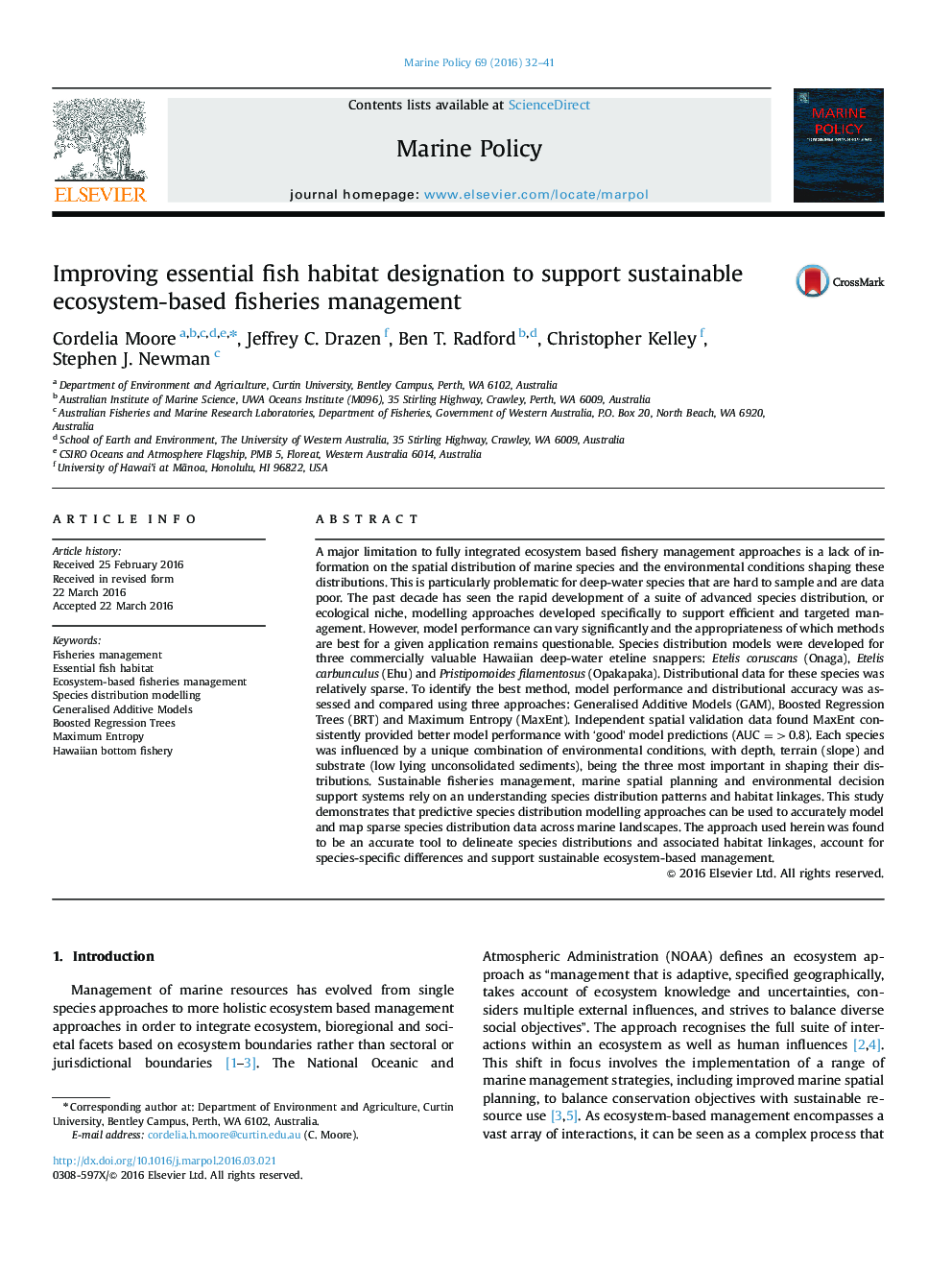| کد مقاله | کد نشریه | سال انتشار | مقاله انگلیسی | نسخه تمام متن |
|---|---|---|---|---|
| 7489140 | 1485510 | 2016 | 10 صفحه PDF | دانلود رایگان |
عنوان انگلیسی مقاله ISI
Improving essential fish habitat designation to support sustainable ecosystem-based fisheries management
ترجمه فارسی عنوان
بهبود زیستگاه های ضروری برای حمایت از مدیریت زراعی مبتنی بر اکوسیستم پایدار
دانلود مقاله + سفارش ترجمه
دانلود مقاله ISI انگلیسی
رایگان برای ایرانیان
کلمات کلیدی
مدیریت شیلات، زیستگاه ماهی ضروری مدیریت ماهیگیری مبتنی بر اکوسیستم، مدل سازی توزیع گونه، مدل های افزایشی عمومی درختان رگرسیون افزایش یافته، حداکثر آنتروپی، ماهیگیری پایین در هاوایی،
Maximum Entropy - حداکثر آنتروپیBoosted regression trees - درختان رگرسیون افزایش یافته استSpecies distribution modelling - مدل سازی توزیع گونهGeneralised additive models - مدل های افزایشی عمومیFisheries Management - مدیریت شیلات Ecosystem-based fisheries management - مدیریت ماهیگیری مبتنی بر اکوسیستمEssential Fish Habitat - مکان های حیاتی ماهی
موضوعات مرتبط
مهندسی و علوم پایه
سایر رشته های مهندسی
مهندسی دریا (اقیانوس)
چکیده انگلیسی
A major limitation to fully integrated ecosystem based fishery management approaches is a lack of information on the spatial distribution of marine species and the environmental conditions shaping these distributions. This is particularly problematic for deep-water species that are hard to sample and are data poor. The past decade has seen the rapid development of a suite of advanced species distribution, or ecological niche, modelling approaches developed specifically to support efficient and targeted management. However, model performance can vary significantly and the appropriateness of which methods are best for a given application remains questionable. Species distribution models were developed for three commercially valuable Hawaiian deep-water eteline snappers: Etelis coruscans (Onaga), Etelis carbunculus (Ehu) and Pristipomoides filamentosus (Opakapaka). Distributional data for these species was relatively sparse. To identify the best method, model performance and distributional accuracy was assessed and compared using three approaches: Generalised Additive Models (GAM), Boosted Regression Trees (BRT) and Maximum Entropy (MaxEnt). Independent spatial validation data found MaxEnt consistently provided better model performance with 'good' model predictions (AUC =>0.8). Each species was influenced by a unique combination of environmental conditions, with depth, terrain (slope) and substrate (low lying unconsolidated sediments), being the three most important in shaping their distributions. Sustainable fisheries management, marine spatial planning and environmental decision support systems rely on an understanding species distribution patterns and habitat linkages. This study demonstrates that predictive species distribution modelling approaches can be used to accurately model and map sparse species distribution data across marine landscapes. The approach used herein was found to be an accurate tool to delineate species distributions and associated habitat linkages, account for species-specific differences and support sustainable ecosystem-based management.
ناشر
Database: Elsevier - ScienceDirect (ساینس دایرکت)
Journal: Marine Policy - Volume 69, July 2016, Pages 32-41
Journal: Marine Policy - Volume 69, July 2016, Pages 32-41
نویسندگان
Cordelia Moore, Jeffrey C. Drazen, Ben T. Radford, Christopher Kelley, Stephen J. Newman,
